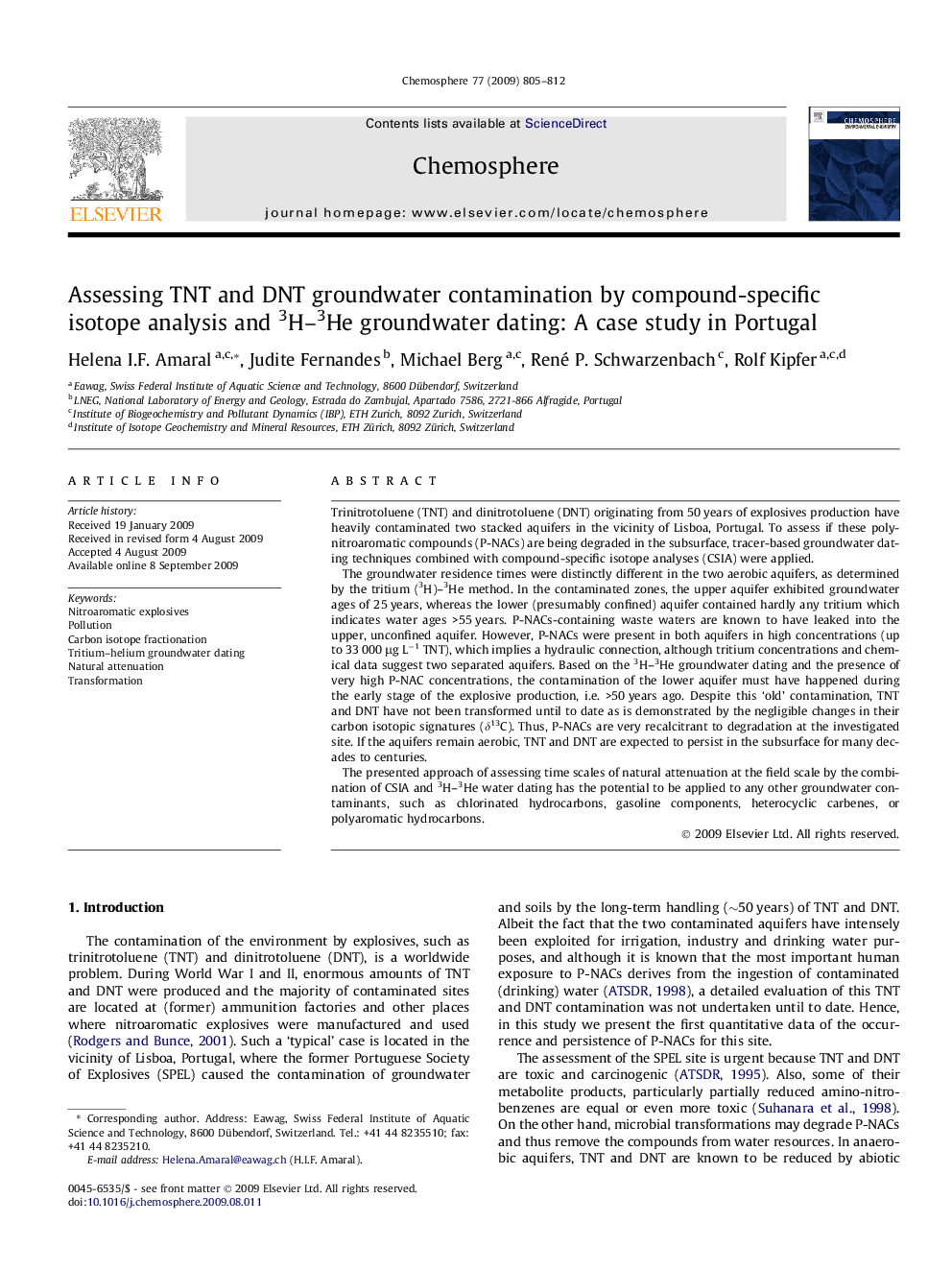| کد مقاله | کد نشریه | سال انتشار | مقاله انگلیسی | نسخه تمام متن |
|---|---|---|---|---|
| 4412583 | 1307644 | 2009 | 8 صفحه PDF | دانلود رایگان |

Trinitrotoluene (TNT) and dinitrotoluene (DNT) originating from 50 years of explosives production have heavily contaminated two stacked aquifers in the vicinity of Lisboa, Portugal. To assess if these poly-nitroaromatic compounds (P-NACs) are being degraded in the subsurface, tracer-based groundwater dating techniques combined with compound-specific isotope analyses (CSIA) were applied.The groundwater residence times were distinctly different in the two aerobic aquifers, as determined by the tritium (3H)–3He method. In the contaminated zones, the upper aquifer exhibited groundwater ages of 25 years, whereas the lower (presumably confined) aquifer contained hardly any tritium which indicates water ages >55 years. P-NACs-containing waste waters are known to have leaked into the upper, unconfined aquifer. However, P-NACs were present in both aquifers in high concentrations (up to 33 000 μg L−1 TNT), which implies a hydraulic connection, although tritium concentrations and chemical data suggest two separated aquifers. Based on the 3H–3He groundwater dating and the presence of very high P-NAC concentrations, the contamination of the lower aquifer must have happened during the early stage of the explosive production, i.e. >50 years ago. Despite this ‘old’ contamination, TNT and DNT have not been transformed until to date as is demonstrated by the negligible changes in their carbon isotopic signatures (δ13C). Thus, P-NACs are very recalcitrant to degradation at the investigated site. If the aquifers remain aerobic, TNT and DNT are expected to persist in the subsurface for many decades to centuries.The presented approach of assessing time scales of natural attenuation at the field scale by the combination of CSIA and 3H–3He water dating has the potential to be applied to any other groundwater contaminants, such as chlorinated hydrocarbons, gasoline components, heterocyclic carbenes, or polyaromatic hydrocarbons.
Journal: Chemosphere - Volume 77, Issue 6, October 2009, Pages 805–812